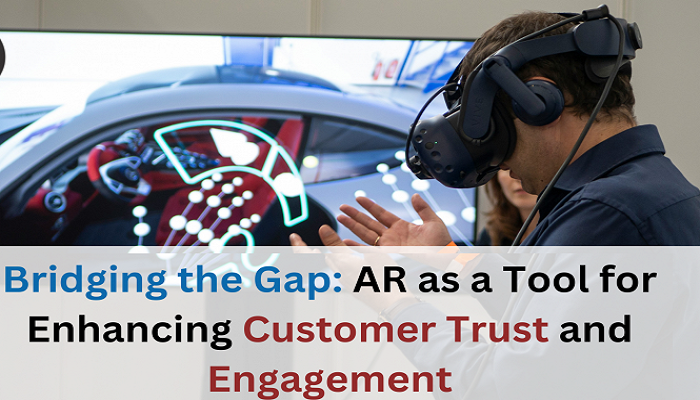In today’s digital age, businesses are constantly seeking innovative ways to build stronger relationships with their customers. Augmented Reality (AR) has emerged as a powerful tool that not only captivates audiences but also fosters trust and engagement like never before.
Building Trust through Transparency and Authenticity:
AR integrates digital information seamlessly into the real-world environment, providing users with an immersive and interactive experience. This technology holds immense potential for businesses across various industries, offering unique opportunities to connect with customers on a deeper level.
One of the key ways AR enhances customer trust is by providing transparency and authenticity. For example, in the retail sector, AR can enable customers to visualize products in their own space before making a purchase. This eliminates doubts about the product’s appearance, size, or fit, thereby boosting confidence in the buying decision.

Driving Engagement with Immersive Experiences:
Moreover, AR can facilitate enhanced product information and demonstrations, allowing customers to explore features and functionalities in real-time. By providing detailed insights into the product’s capabilities, AR builds credibility and reinforces trust in the brand.
Furthermore, AR experiences create memorable interactions that leave a lasting impression on customers. Whether it’s through interactive games, virtual try-ons, or immersive storytelling, AR captivates users’ attention and drives engagement. This heightened engagement not only strengthens brand loyalty but also encourages customers to share their experiences with others, amplifying brand reach and influence.
Personalization for Deeper Connections:
In addition to enhancing trust and engagement, AR also enables personalized experiences tailored to individual preferences. By leveraging data analytics and machine learning algorithms, businesses can deliver targeted AR content that resonates with each customer’s interests and needs. This personalized approach not only deepens the connection between the brand and the customer but also increases the likelihood of conversion and repeat business.
Conclusion:
Moreover, as AR technology continues to evolve, its integration with other emerging technologies such as artificial intelligence and IoT opens up new avenues for customer engagement. From interactive virtual assistants to smart AR-enabled devices, the possibilities are limitless in creating immersive experiences that foster trust and loyalty.
In conclusion, Augmented Reality represents a paradigm shift in customer interaction, offering businesses unparalleled opportunities to build trust and engagement. By leveraging AR technology effectively, businesses can create immersive experiences that not only delight customers but also forge lasting relationships built on transparency, authenticity, and personalized engagement. As AR continues to reshape the digital landscape, businesses that embrace this transformative technology will undoubtedly emerge as leaders in customer-centric innovation.


